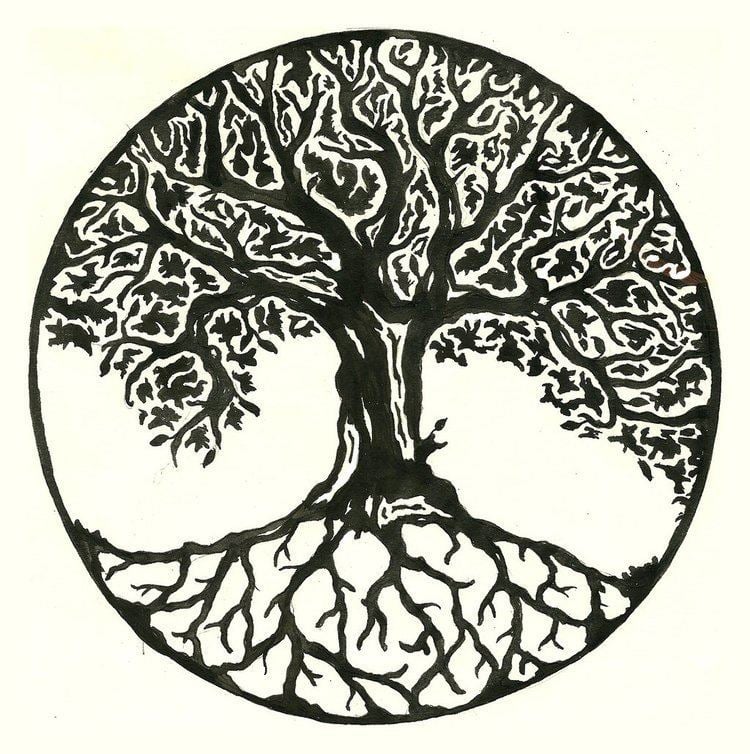 | ||
Magyar mythology the world tree
The world tree is a motif present in several religions and mythologies, particularly Indo-European religions, Siberian religions, and Native American religions. The world tree is represented as a colossal tree which supports the heavens, thereby connecting the heavens, the terrestrial world, and, through its roots, the underworld. It may also be strongly connected to the motif of the tree of life.
Contents
- Magyar mythology the world tree
- The ancient mayan world tree
- Norse mythology
- Siberian culture
- Mesoamerican culture and Indigenous cultures of the Americas
- Other cultures
- Evolutionary origins
- References
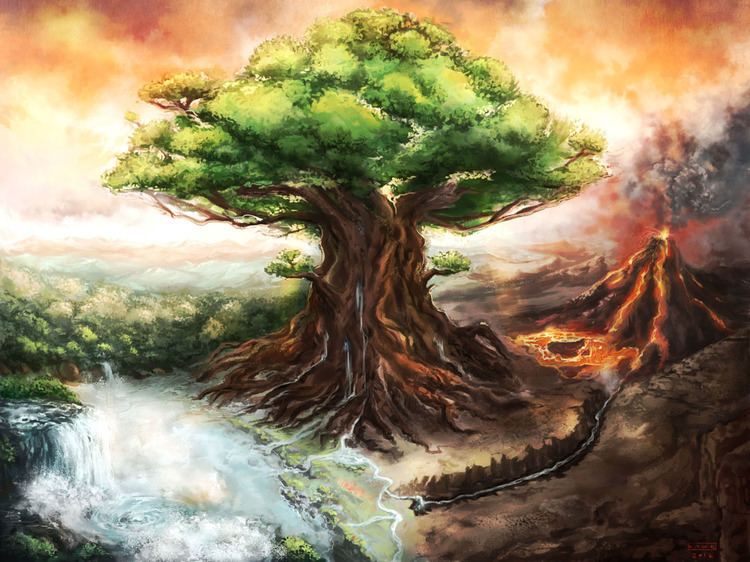
Specific world trees include világfa in Hungarian mythology, Ağaç Ana in Turkic mythology, Modun in Mongolian mythology, Yggdrasil (or Irminsul) in Germanic (including Norse) mythology, the Oak in Slavic, Finnish and Baltic, Kien-Mu or Jian-Mu in Chinese mythology, and in Hindu mythology the Ashvattha (a Sacred Fig).
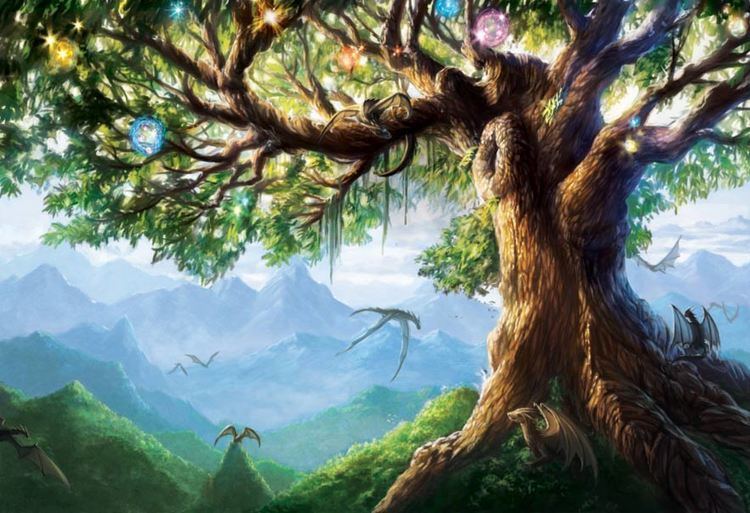
The ancient mayan world tree
Norse mythology
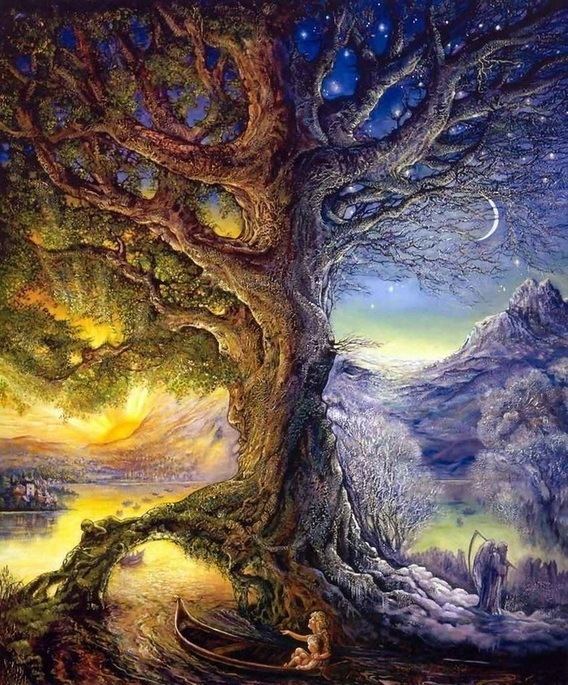
In Norse mythology, Yggdrasil is the world tree. Yggdrasil is attested in the Poetic Edda, compiled in the 13th century from earlier traditional sources, and the Prose Edda, written in the 13th century by Snorri Sturluson. In both sources, Yggdrasil is an immense ash tree that is central and considered very holy. The Æsir go to Yggdrasil daily to hold their courts. The branches of Yggdrasil extend far into the heavens, and the tree is supported by three roots that extend far away into other locations; one to the well Urðarbrunnr in the heavens, one to the spring Hvergelmir, and another to the well Mímisbrunnr. Creatures live within Yggdrasil, including the harts Dáinn, Dvalinn, Duneyrr and Duraþrór, the giant in eagle-shape Hraesvelgr, the squirrel Ratatoskr and the wyrm Níðhöggr. Scholarly theories have been proposed about the etymology of the name Yggdrasil, the potential relation to the trees Mímameiðr and Læraðr, and the sacred tree at Uppsala.
Siberian culture
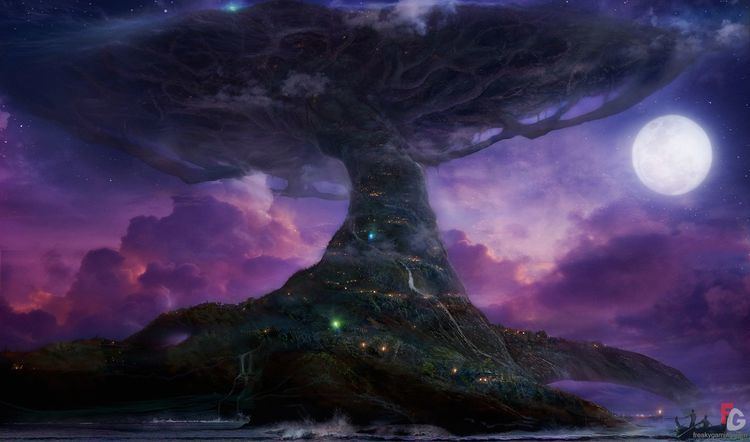
The world tree is also represented in the mythologies and folklore of Northern Asia and Siberia. In the mythology of the Samoyeds, the world tree connects different realities (underworld, this world, upper world) together. In their mythology the world tree is also the symbol of Mother Earth who is said to give the Samoyed shaman his drum and also help him travel from one world to another.
The symbol of the world tree is also common in Tengriism, an ancient religion of Mongols and Turkic peoples.
The world tree is visible in the designs of the Crown of Silla, Silla being one of the Three Kingdoms of Korea. This link is used to establish a connection between Siberian peoples and those of Korea.
Mesoamerican culture and Indigenous cultures of the Americas
A common theme in most indigenous cultures of the Americas is a concept of directionality (the horizontal and vertical planes), with the vertical dimension often being represented by a world tree. Some scholars have argued that the religious importance of the horizontal and vertical dimensions in many animist cultures may derive from the human body and the position it occupies in the world as it perceives the surrounding living world. Many Indigenous cultures of the Americas have similar cosmologies regarding the directionality and the world tree, however the type of tree representing the world tree depends on the surrounding environment. For many Indigenous American peoples located in more temperate regions for example, it is the spruce rather than the ceiba that is the world tree; however the idea of cosmic directions combined with a concept of a tree uniting the directional planes is similar.
Other cultures
Although the concept is absent from the Greek mythology, medieval Greek folk traditions and more recent folklore claim that the tree that holds the Earth is being sawed by Kallikantzaroi (commonly translated as goblins).
The world tree is widespread in Lithuanian folk painting, and is frequently found carved into household furniture such as cupboards, towel holders, and laundry beaters.
The world tree (Latvian: Austras koks - "Tree of Dawn") also was one of the most important beliefs in Latvian mythology.
Remnants of the world tree concept are also evident within the history and folklore of Ireland's Gaelic past. There are many accounts within early Irish manuscripts of great tribal trees known as Bile being cut down by enemy tribes during times of war. This world tree concept, being strongly Indo-European, was likely to have been a feature of early Celtic culture.
Remnants are also evident in the Kalpavriksha ("wish-fulfilling tree") and the Ashvattha tree of the South Asian religions.
In Brahma Kumaris religion, the World Tree is portrayed as the "Kalpa Vriksha Tree", or "Tree of Humanity", in which the founder Brahma Baba (Dada Lekhraj) and his Brahma Kumaris followers are shown as the roots of the humanity who enjoy 2,500 years of paradise as living deities before trunk of humanity splits and the founders of other religions incarnate. Each creates their own branch and brings with them their own followers, until they too decline and split. Twig like schisms, cults and sects appear at the end of the Iron Age.
Evolutionary origins
Some scholars suggest that the world tree is programmed into the human mind by evolutionary biology. Human beings are primates, and lived in trees for around 60 million years. The idea of a vast tree as the entirety of the world is thus still implanted in our collective unconscious.
